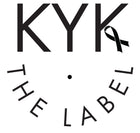Same, Same But Different
by Dr Maree Colosimo
Medical Oncologist
The Many Faces Of Breast Cancer
When someone is diagnosed with breast cancer. The information and terminology can be confusing. This article is aimed at clarifying the terms used in breast cancer diagnosis and treatment.
Breast cancer is generally divided into two groups. This determines the type of treatment and whether treatment is aimed at cure or control.
Early/Primary
Includes breast cancer confined to the primary within the breast and local lymph nodes. Treatment is aimed at cure and prevention of recurrence
Late/Metastatic/Secondary
Involves breast cancer that has spread outside the breast to other organs in the body, including bone, lung, liver, pleura, nodes (outside of the local lymph nodes) and brain. Treatment is aimed at control and is not curable, however woman can live many years with secondary breast cancer.
Types Of Breast Cancer
DCIS - non-invasive cancer (pre-cancer) removed as can be a precursor to breast cancer
Invasive Breast Cancer - Arises from the ducts of the milk ducts in the breast. Types include Ductal (NST) most common, lobular, apocrine, tubular, medullary, mucinous, papillary cribriform.
Types of Breast Cancer - Determined by estrogen and progesterone receptor and HER 2 status.
Estrogen Receptor (ER) - 65% - 70% of breast cancer. If a breast cancer is ER positive the female hormone estrogen is an important driver mechanism in the development and spread of this type of breast cancer. The types of ER positive breast cancer can be divided into Luminal A where the ER has a strong role 40% of breast cancers and Luminal B where the ER has less of a role and other mechanisms drive the development 20-25%
Progesterone Receptor (ER) - The Progesterone receptor works in combination with the
Estrogen Receptor. It is not a target for treatment but can help determine the whether a breast cancer is Luminal A or B and effectiveness of endocrine treatment.
HER 2 Receptor (HER2) - 15 - 20 % of breast cancers have an overproduction of the Her 2 receptor on the surface of the breast cancer cell. This receptor can act as a switch on key on the breast cancer cell to grow and spread. There are now effective treatments against the Her2 receptor.
Triple Negative - 10 - 15% of breast cancers that are described as triple negative. These are breast cancer cells that have no ER/ PR / Her2 activation. They are driven by other mechanisms within the breast cancer cell which drives the cancer to grow and spread.
Treatment Decisions
In early breast cancer treatment decisions are based on risk of recurrence and benefits of treatments in improving cure. In late breast cancer treatments are aimed at control with both quality of life and improved outcomes. Stage, grade and type of breast cancer are all important in making these decisions.
Stage
Based on size, lymph node involvement, spread outside the breast
Early stage 1/2/3
Late stage – metastasis outside the breast
Grade
How fast a cancer is growing. Grade 1 - 3. Grade 1 being slow growing and Grade 3 fast growing.
Types Of Breast Cancer
Estrogen receptor/ Progesterone receptor sensitivity and Her 2 involvement.
Treatment Options
Include chemotherapy, endocrine therapy targeting the estrogen receptor and Her2 based therapy targeting the Her2 receptors.
Dr Maree Colosimo is based at St Vincent’s Private Hospital Northside.
DISCLAIMER:
Please discuss all medical treatment options with your medical professionals team to decide on the best treatment outcome for you.



Leave a comment